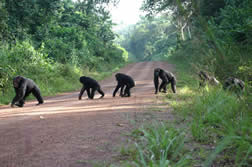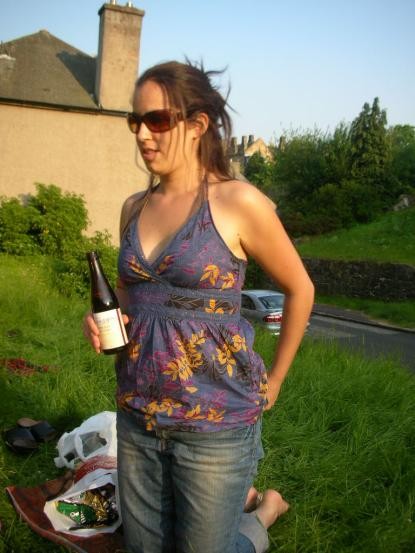
Kim是一27很漂亮的英格女生,
也是田先生一群心理家朋友,研究黑猩猩的人,
很想像很秀的她之前年在非洲的研究做研究,
’去非洲安全第一喔!入夜之後不要到走。’
Kim在Anna今年八月前去非洲前了多的分享。
Kim的研究在英表之後,得媒的注趣,
不止平面媒,discovery都她。
看到新之後,才赫然想起她之前在酒吧酒酣耳之的,
身在一群者中,真是非常特的呢!
下面是校原始的新稿:
Title :Chimp Cross Code
Date released: Tuesday 5 September 2006
In a finding that broadens our understanding of primate cooperation, research by the University of Stirling has found that chimpanzees evaluate road risk and adopt specific spatial patterning when crossing roads.
Researcher Kimberley Hockings said: “Prior research has shown that adult male monkeys reduce the risks of predatory attacks through adaptive spatial patterning, moving toward the front of the group when travelling towards potentially unsafe areas such as waterholes, and bringing up the rear when retreating, but comparable data on great ape progression orders are lacking. Road-crossing, a human-created challenge, presents a new situation that calls for flexibility of responses by chimpanzees to variations in perceived risk, helping to improve our understanding about the evolution of human social organisation.”
Road-crossing order was studied in a small community of chimpanzees (Pan troglodytes verus) at Bossou, Guinea, West Africa as they crossed two roads, one large and busy with traffic, and the other smaller and frequented mostly by pedestrians. Adult males, less fearful and more physically imposing than other group members, take up forward and rearward positions, with adult females and young occupying the more protected middle positions. The positioning of dominant and bolder individuals, in particular the alpha male, changed depending on both the degree of risk and number of adult males present.
Kimberley Hockings said: “Dominant individuals act cooperatively with a high level of flexibility to maximise group protection.”
Lesley Wilkinson (née Pollock)
Media Relations Manager
(01786) 467058

:立的女生Kim
:Kim是很心的女生,第一次面,就一直找跟我聊,暖,我很快就抱在一起了!
文章定位:





